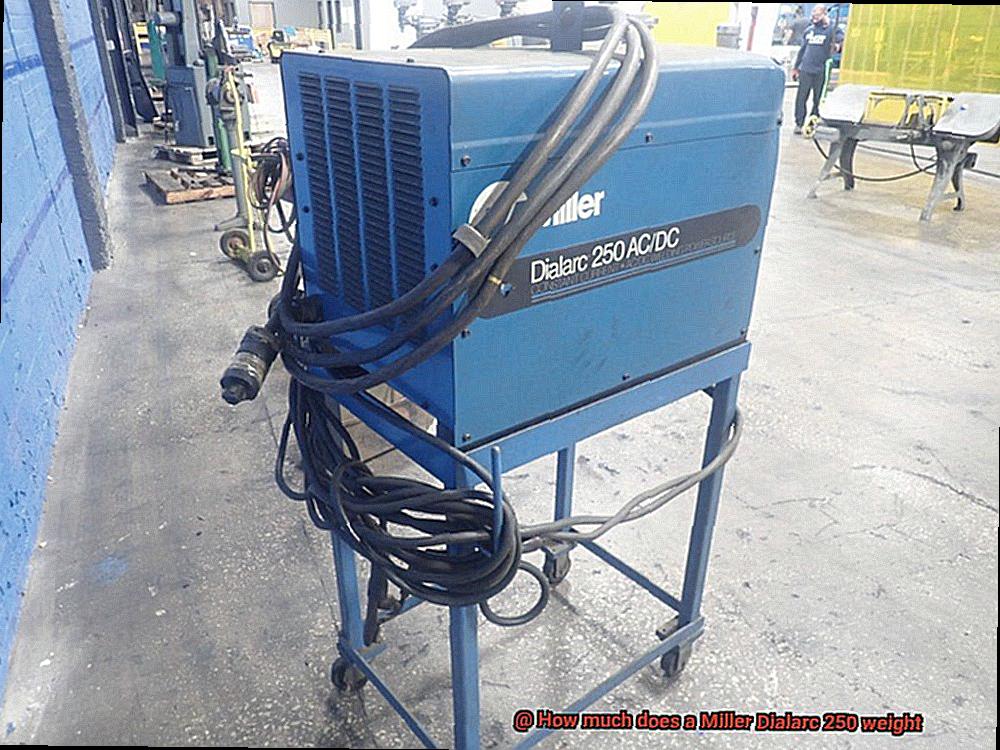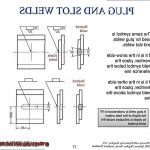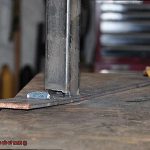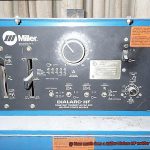Are you a welder or aspiring to be one? Then you know that having the right tools is essential. And when it comes to welding machines, the Miller Dialarc 250 is undoubtedly a top contender. This machine has been a favorite among welders for years, thanks to its impressive performance and durability.
But, let’s face it – weight matters. Whether you’re a business owner transporting equipment from job site to job site or a hobbyist moving it around your garage, knowing the weight of your welding machine is crucial. So, just how much does a Miller Dialarc 250 weigh?
In this blog post, we’ll explore the weight of this machine and why it’s important. But before we dive into that, let’s talk about what makes the Miller Dialarc 250 so special.
So, let’s get started.
What is the Miller Dialarc 250?
Contents
This versatile and durable machine is designed to deliver high-quality welds with minimal effort, making it a popular choice among welders.
One of the most important things to consider when buying a new or used welding machine is its weight. And while it may be true that the Miller Dialarc 250 weighs around 361 pounds (163 kg), don’t let that discourage you just yet. In fact, its weight is an indication of its robust construction and durability, ensuring that it can withstand even the most demanding tasks.
The Miller Dialarc 250 boasts advanced features such as a stable arc, adjustable voltage settings, and an easy-to-read digital display, making it easy for welders of all skill levels to use. It also comes with a range of accessories that enhance its performance and make it more versatile for different welding applications.
While some users may find the weight of the Miller Dialarc 250 challenging to move around frequently, it’s worth noting that the weight is actually an advantage when it comes to stability and performance.
The heavier machine tends to be more stable and less likely to vibrate or move during use, leading to better weld quality and less fatigue for the operator.
How Much Does it Weigh?
The Miller Dialarc 250 is the perfect choice. But before you make your purchase, you may be curious about how much this powerhouse machine weighs. As an expert on this topic, let me provide you with all the information you need.
The Miller Dialarc 250 weighs approximately 358 pounds (162 kg), making it a little heavier than some other welding machines on the market. But don’t let this deter you. In fact, the weight of the Miller Dialarc 250 is actually an advantage as it provides stability and better weld quality with less fatigue for the operator.
Of course, when you need to transport your machine from one location to another, you’ll need to take some precautions. It’s recommended that you use a sturdy hand truck or dolly to move it around, and always ensure that the machine is securely fastened down during transport to prevent any accidents or injuries. By doing so, you can easily move your Miller Dialarc 250 without any worries.
Why Weight Matters for Welding Machines
If you’re looking for a welding machine, you might be wondering why weight matters. Well, let me tell you, weight is a crucial factor when it comes to selecting the right welding machine.
First and foremost, the weight of a welding machine can impact its portability and ease of use. When working on a job site with uneven terrain or stairs, a heavy machine can be difficult to move around. If you plan on taking your welding machine from one location to another frequently, a lighter model might be more suitable.
However, the weight of the machine also plays a vital role in determining its performance and durability. Take the Miller Dialarc 250, for instance. This robust machine is designed to handle different welding applications like stick welding, TIG welding, and MIG welding. Although it weighs approximately 360 pounds, it’s necessary for the machine’s stability during use, making your welds better.
In fact, a heavier machine can help reduce operator fatigue by providing better stability during welding. With this stability, you’ll be able to work for longer periods without feeling as tired.
On the flip side, while a lighter model may be more comfortable to transport, it may not offer the same level of stability or durability as a heavier one. It all depends on your specific needs and preferences.
If you decide to go for a heavier machine like the Miller Dialarc 250, remember to take precautions when moving it around. Use a sturdy hand truck or dolly and securely fasten it down to prevent accidents or injuries.
Advantages of a Heavier Machine
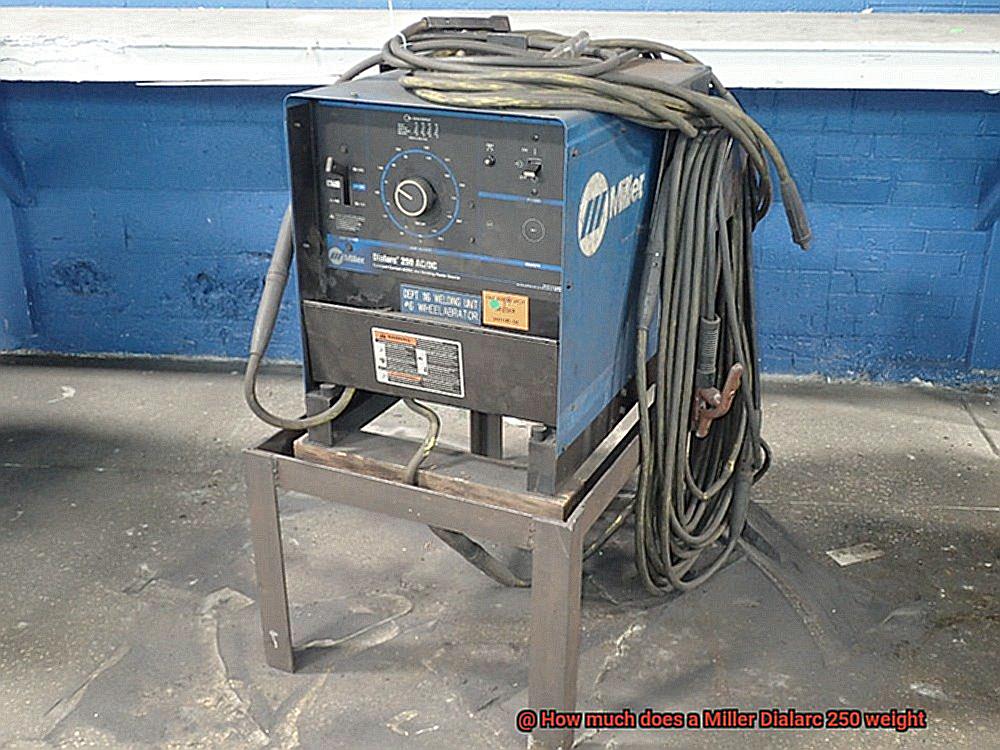
While a lighter machine may seem like the easy choice, there are significant advantages to using a heavier machine like the Miller Dialarc 250.
One of the most significant benefits of a heavier machine is its stability. The Miller Dialarc 250’s weight ensures that it will not vibrate or move around during welding, resulting in more accurate and consistent welds. This is especially important when working on larger or thicker materials that require precision and control.
Additionally, a heavier machine can handle higher amperage settings, allowing for more power and efficiency when welding. With the ability to weld with up to 250 amps of power, the Miller Dialarc 250 is suitable for a wide range of welding applications. Larger electrodes and wire can also be used with heavier machines, allowing for faster and more efficient work.
Durability and longevity are other significant advantages of heavier machines. They are typically made with stronger materials that can withstand constant use and have better cooling systems to prevent overheating, leading to a longer lifespan.
Finally, a heavier machine often offers more versatility than a lighter one. The Miller Dialarc 250 comes equipped with adjustable arc force control, allowing for fine-tuning of arc length and penetration to meet specific welding needs.
Disadvantages of a Heavier Machine
While these machines may offer stability and durability, it is important to consider the potential downsides before making a decision.
One major disadvantage of a heavier machine is portability. When working in tight spaces, maneuvering a heavy machine can be difficult and frustrating. Welders who need to frequently adjust their position may find this limitation particularly challenging.
Another issue with a heavier machine is the potential strain on the user’s back and arms. The weight of the machine can take a toll on the body over time, leading to discomfort and fatigue. This can be a significant concern for welders who work long hours or on large projects.
Energy consumption is another potential downside of a heavier machine. These machines may require more electricity to operate efficiently, which can lead to higher energy bills and environmental concerns. Additionally, maintenance and upkeep costs may be higher due to the weight and usage of the machine.
While heavier machines may seem appealing due to their durability and stability, it is crucial to carefully consider these potential drawbacks before making a purchase. Welders who prioritize factors such as portability, ease of use, and maintenance requirements when selecting the right machine for their needs will make an informed decision that ensures efficient and effective work.
pMLIcJIztG4″ >
Conclusion
To sum it up, the Miller Dialarc 250 is a reliable and versatile welding machine that has been a top choice among welders for years. Its weight of around 358 pounds (162 kg) may seem intimidating, but it actually provides stability and better weld quality with less operator fatigue. Plus, its weight indicates its sturdy construction and durability, making it capable of handling even the most challenging tasks.
While the weight of a welding machine can affect its portability and ease of use, heavier machines like the Miller Dialarc 250 offer significant advantages such as stability, higher amperage settings, durability, longevity, and versatility. However, they also have potential downsides such as limited portability in tight spaces, strain on the user’s body over time, higher energy consumption, and maintenance costs.
Ultimately, selecting the right welding machine depends on your specific needs and preferences. Welders who prioritize factors such as portability, ease of use, and maintenance requirements when choosing their machine will make an informed decision that ensures efficient and effective work.
